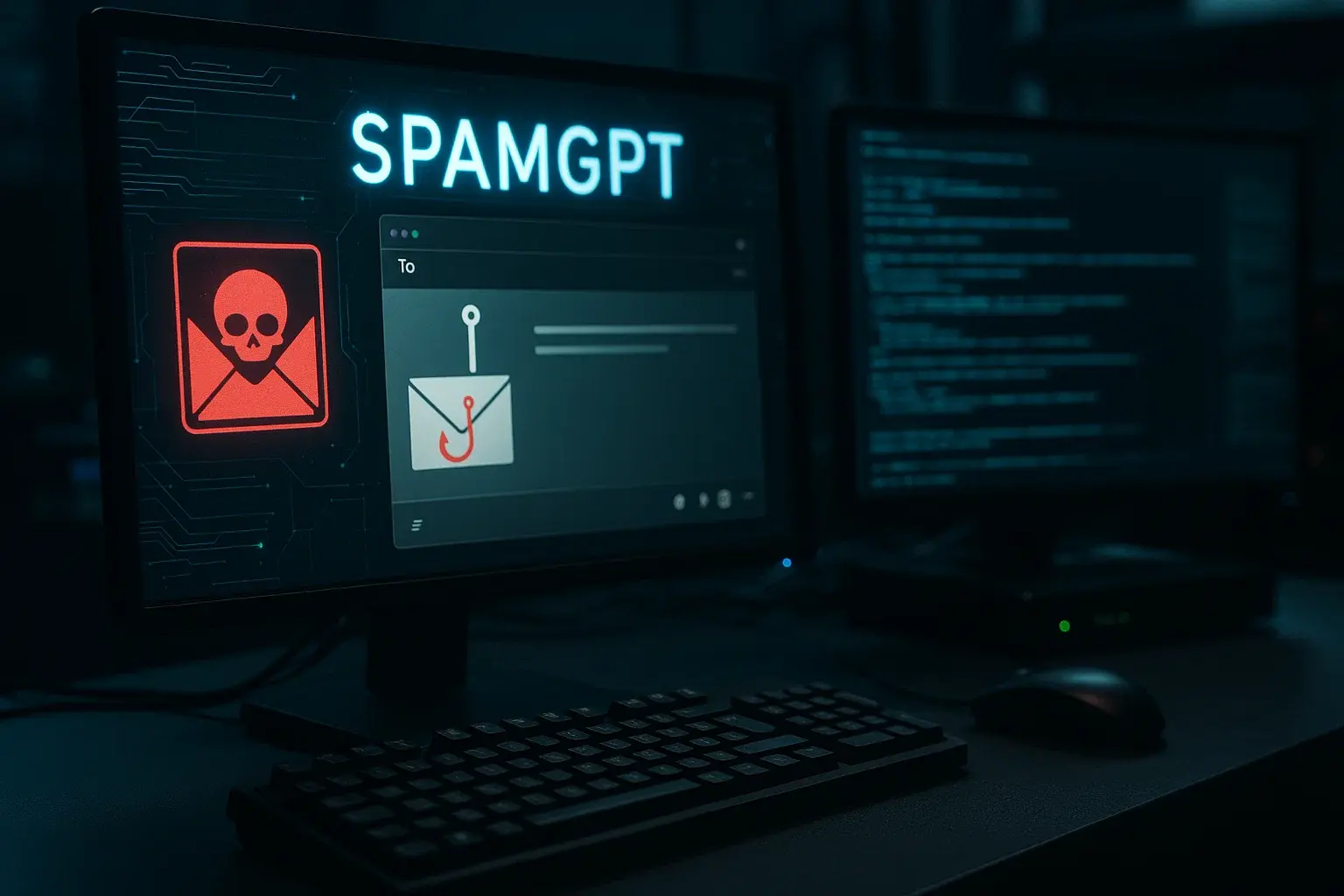Email remains one of the main attack vectors for cybercriminals. While you may think you’ve seen every phishing trick in the book, attackers are stepping up their game. With the help of artificial intelligence, they’ve developed SpamGPT—a next-generation phishing toolkit that completely reshapes the email threat landscape.
At TecnetOne, we’re breaking down how SpamGPT works, why it’s so dangerous, and what you can do to protect your business and data.
What Is SpamGPT?
SpamGPT is an AI-powered phishing toolkit that first appeared on underground forums and quickly caught the attention of cybersecurity researchers. It operates as a “spam-as-a-service” platform, resembling legitimate email marketing tools. If you saw its control panel, you might mistake it for the software your own company uses to manage email campaigns.
The difference? SpamGPT is designed to launch large-scale phishing campaigns, with auto-generated templates and AI-driven deception strategies. Attackers don’t need to craft each message manually—they just set a few parameters, and the AI takes care of generating convincing, hard-to-detect emails.
Related titles: ChainLink Phishing: Trusted Domains Used as Threats
AI’s Role in Phishing
What makes SpamGPT so alarming is its integration of an AI assistant called “KaliGPT.” This assistant can write professional-looking emails with compelling subject lines, persuasive content, and even victim segmentation strategies.
This means a low-skilled attacker can now launch sophisticated campaigns with ease. SpamGPT also offers real-time analytics, showing how many emails were sent, opened, and how effective the campaign was—just like a legitimate CRM tool.
In other words: the same level of marketing optimization you use for business is now used to commit cybercrime.

SpamGPT uses AI to create undetectable phishing emails at scale. Learn how it works, why it’s dangerous, and how to defend your business.
Abusing Legitimate Services
To maximize deliverability, SpamGPT leverages cloud services from providers like AWS and SendGrid. This allows malicious emails to blend in with regular traffic, making them harder for spam filters to flag.
It even includes modules to test deliverability across platforms like Gmail, Outlook, Yahoo, and Microsoft 365—and then adjusts sending parameters to ensure inbox delivery.
Spoofing and SMTP Cracking
SpamGPT includes a section called "SMTP Cracking Mastery"—a guide for attackers on compromising email servers or mass-creating SMTP accounts. This enables domain spoofing and fake sender identities.
If your organization hasn’t properly configured SPF, DKIM, and DMARC, you’re an easy target.

SpamGPT’s mailing dashboard with statistics (Source: BLACKHAT)
Inbox Monitoring and Analytics
Beyond just sending emails, SpamGPT provides inbox monitoring tools and detailed analytics. Attackers can test how emails land (Inbox or Spam), and tweak strategies until they reach optimal success rates.
This mirrors how legitimate marketers use CRM tools to optimize performance—except here, the goal is to steal credentials or deliver malware.
Price and Reach of SpamGPT
Perhaps the most chilling fact: SpamGPT is sold as a subscription on underground forums, starting at $5,000. What once required an entire team of skilled hackers can now be done by a single actor.
Researchers warn that AI-generated phishing emails are much harder for traditional filters to detect, as the content is coherent, contextual, and highly variable.

SpamGPT’s ability to set custom headers (Source: BLACKHAT)
What It Means for You and Your Business
At TecnetOne, we want to make this clear: SpamGPT lowers the barrier to entry for cybercrime. Now, virtually anyone with access to this toolkit can launch phishing attacks that were once limited to advanced threat actors.
This means the risk of an employee clicking a malicious link is significantly higher—regardless of your company’s size.
How to Defend Against SpamGPT and AI Phishing
Even if it sounds overwhelming, there are concrete steps you can take:
- Implement email authentication policies
Ensure your domains are properly configured with SPF, DKIM, and DMARC.
- Invest in AI-based security solutions
Traditional filters aren’t enough. Use systems that detect AI-generated patterns and correlate suspicious behaviors.
- Train your staff continuously
Awareness is still key. Your team needs to recognize suspicious emails—even highly realistic ones.
- Enable continuous monitoring
Watch for domain spoofing attempts and abnormal email activity within your infrastructure.
- Share threat intelligence
Join communities to exchange information. What you learn from an attack today may help someone else tomorrow.

SpamGPT’s inbox check module (Source: BLACKHAT)
AI: A Double-Edged Sword
SpamGPT proves that AI is a double-edged sword. While you can use it to boost productivity, attackers use it to scale their phishing operations.
The difference lies in how quickly you respond. Don’t try to block AI altogether—learn how to work with it safely. Use its advantages while reinforcing your defenses.
At TecnetOne, we believe the key is anticipation: understanding how this new wave of threats works and updating your cybersecurity strategy before it’s too late.
You might also be interested in: Do you know how to spot a phishing attack?
Conclusion
SpamGPT isn’t just another phishing kit—it’s a warning sign of where cybercrime is heading. With sleek interfaces, real-time analytics, and AI-generated content, attacks will only become more convincing and dangerous.
Your mission is clear: don’t underestimate the threat. While attackers use AI to scale their reach, you must use it to strengthen your defense.
At TecnetOne, we’re here to help you deploy the most advanced protections and train your team to avoid falling for the trap—because cybersecurity is no longer optional; it’s the only way to ensure your business continues to grow safely.


